|
|
 
 Teotihuacan: Art from the City of the Gods Teotihuacan: Art from the City of the Gods 
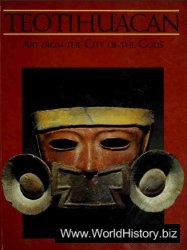 Teotihuacan - Art from the city of the gods Thames & Hudson Ltd Author: Kathleen Berrin (Editor), Esther Pasztory (Editor) August 3, 1993 Pages:256 Language:English Format:pdf Size:44,4 Mb Fifteen hundred years ago, Teotihuacan was one of the world's greatest cities. Some 200,000 people lived in this Mexican metropolis, with its massive public buildings, grid plan of streets and imposing murals and sculpture. Its trading empire dominated much of ancient Mexico. Then, in the 8th century, came a mysterious collapse. Even knowledge of the original name was lost: Teotihuacan, "City of the Gods", was a title bestowed by the Aztecs six hundred years later. Published in conjunction with an exhibition organized by The Fine Arts Museums of San Francisco, this volume brings together for the first time the fruits of researches that are at last unveiling Teotihuacan. Over a dozen distinguished scholars examine every aspect of the city's culture, from its role as an urban centre, its religion and writing system, to its imposing pyramid-temples and superlative art. A splendid array of rarely seen masterpieces, from jewellery, greenstone masks and elegant blackware to figurines and elaborate wall paintings, provides visual proof of the magnificence of Teotihuacan's culture.
 
 The Spartacus Road: A Personal Journey Through Ancient Italy The Spartacus Road: A Personal Journey Through Ancient Italy 
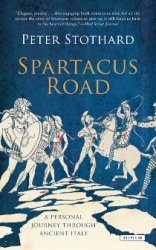 Author: Peter Stothard The Spartacus Road: A Personal Journey Through Ancient Italy Overlook 2012 (Reprint edition) Format: PDF/ePub Size: 11.6 Mb Language: English The name of Spartacus resounds through history. In the final century of the first Roman Republic an army of slaves led by Spartacus rose up in Italy. Its success was something no one before had ever known. The Spartacus Road is the route along which this rebel army outfought the world's finest military forces between 73and 71 BC, bringing both fears and hopes that have never wholly left the modern mind. Sweepingly erudite and strikingly personal, The Spartacus Road is a book like none other--at once a journalist's notebook, a reflection on life's fragility, including the author's own fight against cancer; and a classicist's celebration. As he travels along the Spartacus Road and into the classical Italian landscape, Stothard breathes new life into a singular war in antiquity, recounting one of the greatest stories of the ages.
 
 Classical Archaeology Classical Archaeology 
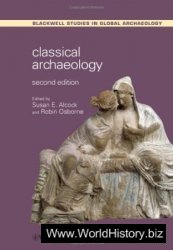 Author: Susan E. Alcock (Editor), Robin Osborne (Editor) Classical Archaeology (2d edition) Wiley-Blackwell 2012 Format: PDF Size: 11.5 Mb Language: English The fully revised second edition of this successful volume includes updates on the latest archaeological research in all chapters, and two new essays on Greek and Roman art. It retains its unique, paired essay format, as well as key contributions from leading archaeologists and historians of the classical world. - Second edition is updated and revised throughout, showcasing the latest research and fresh theoretical approaches in classical archaeology - Includes brand new essays on ancient Greek and Roman art in a modern context - Designed to encourage critical thinking about the interpretation of ancient material culture and the role of modern perceptions in shaping the study of art and archaeology - Features paired essays – one covering the Greek world, the other, the Roman – to stimulate a dialogue not only between the two ancient cultures, but between scholars from different historiographic and methodological traditions - Includes maps, chronologies, diagrams, photographs, and short editorial introductions to each chapter
 
 The Oxford Dictionary of Byzantium The Oxford Dictionary of Byzantium 
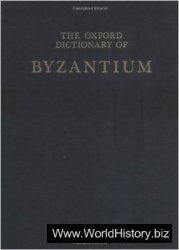 Author: Alexander P. Kazhdan The Oxford Dictionary of Byzantium (Volume 2) Oxford University Press ISBN: 0195046528 1991 Format: PDF Size: 64,5 МБ Language: English The Oxford Dictionary of Byzantium is a three-volume, comprehensive dictionary of Byzantine civilization. The first resource of its kind in the field, it features over 5,000 entries written by an international group of eminent Byzantinists covering all aspects of life in the Byzantine world. According to Alexander Kazhdan, editor-in-chief of the Dictionary: "Entries on patriarchy and emperors will coexist with entries on surgery and musical instruments.
 
 The Archaeology of North America The Archaeology of North America 
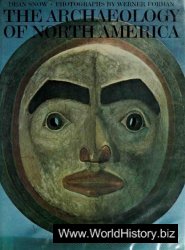 The Archaeology of North America Author: Dean Snow, Werner Forman ACLS Humanities Graduation Year: 2009 Language: English Quality: excellent Format: Pdf Pages: 288 Size: 41 Mb
 
 The Gurob Ship-Cart Model and Its Mediterranean Context The Gurob Ship-Cart Model and Its Mediterranean Context 
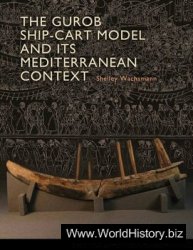 The Gurob Ship-Cart Model and Its Mediterranean Context Author: Shelley Wachsmann, Alexis Catsambis Texas A&M University Press Ed Rachal Foundation Nautical Archaeology Series 2012 ISBN: 1603444297 Pages: 354 Language: English Format: PDF Size: 68 MB When Shelley Wachsmann began his analysis of the small ship model excavated by assistants of famed Egyptologist W. M. F. Petrie in Gurob, Egypt, in 1920, he expected to produce a brief monograph that would shed light on the model and the ship type that it represented. Instead, Wachsmann discovered that the model held clues to the identities and cultures of the enigmatic Sea Peoples, to the religious practices of ancient Egypt and Greece, and to the oared ships used by the Bronze Age Mycenaean Greeks. Although found in Egypt, the prototype of the Gurob model was clearly an Aegean-style galley of a type used by both the Mycenaeans and the Sea Peoples. The model is the most detailed representation presently known of this vessel type, which played a major role in changing the course of world history. Contemporaneous textual evidence for Sherden—one of the Sea Peoples—settled in the region suggests that the model may be patterned after a galley of that culture. Bearing a typical Helladic bird-head decoration topping the stempost, with holes along the sheer strakes confirming the use of stanchions, the model was found with four wheels and other evidence for a wagon-like support structure, connecting it with European cultic prototypes.
 
 Historical Dictionary of Ancient Israel Historical Dictionary of Ancient Israel 
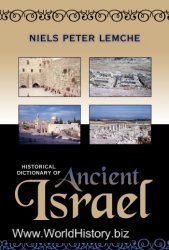 Historical Dictionary of Ancient Israel Author: Niels Peter Lemche The Scarecrow Press, Inc. Graduation Year: 2003 ISBN: 0810848481 Pages: 314 Format: pdf Size : 11,1 mb Language: English This reference examines sources in the Old Testament and surveys the findings of recent archaeological research. It includes entries on the significant persons, places and events; covers the Kingdoms of Israel and Judah and what role they played in the ancient world; and defines them as closely as possible according to the latest data. Readers will find that, while the results may differ from traditional views, they are essential correctives.
 
 From Cyrus to Alexander: A History of the Persian Empire From Cyrus to Alexander: A History of the Persian Empire 
From Cyrus to Alexander: A History of the Persian Empire
Author: Pierre Briant
Eisenbrauns
2002
ISBN: 1575060310
Pages: 1196
Format: PDF
Size: 55 mb
Language: english
This book is not for the faint of heart. It is over 1000 pages, counting notes, and is very comprehensive in its scope. Briant not only provides a very thorough political narrative of the Persian Empire but also covers social, military, religious, and economic matters. The author does a brilliant job of explaining the sources, or lack thereof, and providing equal time to all of the available sources: from the heavily biased Histories of the Greek Herodotus to recently uncovered archaeolgical inscriptions. The translation from the original French is also very solid. This book is without peer in the realm of Persian History, and is unlikely to be replaced as the standard work on the subject for a long time. Truly a great read for anyone interested in ancient history.
Read Full Post
 
 Natural History (Vol. I, III–VII,IX) Natural History (Vol. I, III–VII,IX) 
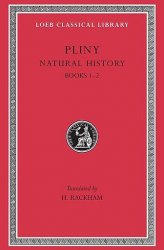 Author: Pliny Natural History (Vol. I, III–VII,IX) Harvard University Press The Loeb Classical Library Language: /English 1938, 1940, 1945, 1950, 1951, 1956, 1952 (Reprint 1967, 1961, 1967, 1960, 1961, 1961, 1966, 1961) Format: PDF Size: 149,29 mb 412+644+580+568+576+592+448
 
 Macchu Picchu: The Story of the Amazing Inkas Macchu Picchu: The Story of the Amazing Inkas 
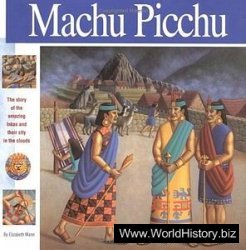 Macchu Picchu: The Story of the Amazing Inkas and Their City in the Clouds Author: Elizabeth Mann, Amy Crehore (Illustrator) Mikaya Press Wonders of the World Book 2000 ISBN: 0965049396 Pages: 48 Language: English Format: PDF Size: 33 MB Using slingshots, clubs and stone-tipped spears, this small Andean tribe conquered an area spanning 2,500 miles. Without the use of the wheel, they built a vast and sophisticated network of roads. Without an alphabet, they administered a population of ten million people. With the most primitive of tools, they built cities of stone. Machu Picchu is as astonishing as its builders. Set in a remote, inaccessible area of the high Andes, this breathtaking city was never found by the Spanish Conquistadores. It is an untouched example of the genius of the Inkas.
 
 Letters to friends (Vol. I-III) Letters to friends (Vol. I-III) 
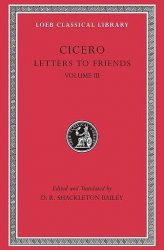 Author: Cicero Letters to friends (Vol. I-III) Harvard University Press Language: /English 1927, 1928, 1929 (Reprint 1958, 1952, 1960) Format: PDF Size: 79,49 mb 578 + 682 + 800
 
 Pharaoh's Flowers: The Botanical Treasures of Tutankhamun Pharaoh's Flowers: The Botanical Treasures of Tutankhamun 
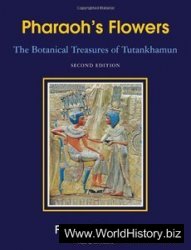 Pharaoh's Flowers: The Botanical Treasures of Tutankhamun, 2nd Edition Author: F. Nigel Hepper KWS Publishers 2009 ISBN: 098177363X Pages: 101 Language: English Format: PDF Size: 19 MB As the golden face of Tutankhamun was found garlanded with fresh flowers exquisitely preserved for 3,000 years, the plants of ancient Egypt are brought back to life in this botanical exploration of the Pharaoh's tomb. Usually ignored by grave robbers intent on gold, the baskets, fabrics, papyri, timber, unguent vases, and model granaries filled to the brim with seeds that were buried with Tutankhamun have survived, completely intact, and each chapter of the book carries detailed descriptions of the plant species found or represented in the tomb, including emmer, fenugreek, chickpea, and types of reed and grass. F. Nigel Hepper groups the plants according to their uses, with categories such as Flowers and Leaves; Oils, Resins, and Perfumes; and Papyrus, Flax, and Other Fibrous Plants. This new edition of the fascinating book that was first published in 1990 has been fully updated to take into account recent finds and interpretations, and it features a revised and annotated further reading section, now with a guide to websites; a glossary of botanical terms; a new diagram of the tomb; additional illustrations; and a Bible references section, keyed to the main text and with quotations from the Old Testament that illuminate ancient botanical knowledge and practices.
 
 Rome's Imperial Economy: Twelve Essays Rome's Imperial Economy: Twelve Essays 
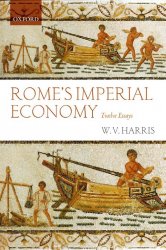 Author: W. V. Harris Rome's Imperial Economy: Twelve Essays Oxford University Press 2011 Pages: 384 ISBN: 019959516X Format: PDF Size: 4 MB Language: English Imperial Rome has a name for wealth and luxury, but was the economy of the Roman Empire as a whole a success, by the standards of pre-modern economies? In this volume W. V. Harris brings together eleven previously published papers on this much-argued subject, with additional comments to bring them up to date. A new study of poverty and destitution provides a fresh perspective on the question of the Roman Empire's economic performance, and a substantial introduction ties the collection together. Harris tackles difficult but essential questions, such as how slavery worked, what role the state played, whether the Romans had a sophisticated monetary system, what it was like to be poor, whether they achieved sustained economic growth. He shows that in spite of notably sophisticated economic institutions and the spectacular wealth of a few, the Roman economy remained incorrigibly pre-modern and left a definite segment of the population high and dry.
 
 Caesar's Gallic Triumph: The Battle of Alesia 52BC Caesar's Gallic Triumph: The Battle of Alesia 52BC 
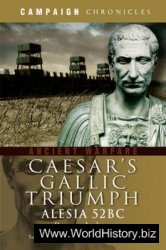 Author: Peter Inker Caesar's Gallic Triumph: The Battle of Alesia 52BC Pen and Sword Military Campaign Chronicles 2008 Format: EPUB Pages: 192 Size: 4 Mb Language: English In 52 B.C. at Alesia in what is now Burgundy in France Julius Caesar pulled off one of the great feats of Roman arms. His heavily outnumbered army utterly defeated the combined forces of the Gallic tribes led by Vercingetorix and completed the Roman conquest of Gaul. The Alesia campaign, and the epic siege in which it culminated, was one of Caesar 's finest military achievements, and it has fascinated historians ever since.
 
 Ashes, Images, and Memories: The Presence of the War Dead in Fifth-Century Athens Ashes, Images, and Memories: The Presence of the War Dead in Fifth-Century Athens 
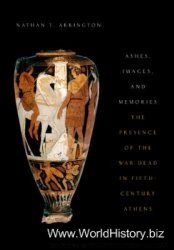 Author: Nathan T. Arrington Ashes, Images, and Memories: The Presence of the War Dead in Fifth-Century Athens Oxford University Press 2014 Format: PDF Size: 24.5 Mb Language: English Ashes, Images, and Memories argues that the institution of public burial for the war dead and images of the deceased in civic and sacred spaces fundamentally changed how people conceived of military casualties in fifth-century Athens. In a period characterized by war and the threat of civil strife, the nascent democracy claimed the fallen for the city and commemorated them with rituals and images that shaped a civic ideology of struggle and self-sacrifice on behalf of a unified community. While most studies of Athenian public burial have focused on discrete aspects of the institution, such as the funeral oration, this book broadens the scope. It examines the presence of the war dead in cemeteries, civic and sacred spaces, the home, and the mind, and underscores the role of material culture--from casualty lists to white-ground lekythoi--in mediating that presence. This approach reveals that public rites and monuments shaped memories of the war dead at the collective and individual levels, spurring private commemorations that both engaged with and critiqued the new ideals and the city's claims to the body of the warrior. Faced with a collective notion of "the fallen," families asserted the qualities, virtues, and family links of the individual deceased, and sought to recover opportunities for private commemoration and personal remembrance. Contestation over the presence and memory of the dead often followed class lines, with the elite claiming service and leadership to the community while at the same time reviving Archaic and aristocratic commemorative discourses. Although Classical Greek art tends to be viewed as a monolithic if evolving whole, this book depicts a fragmented and charged visual world.
 
 The Legacy of Fort William Henry: Resurrecting the Past The Legacy of Fort William Henry: Resurrecting the Past 
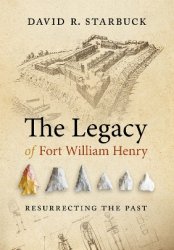 Author: David R. Starbuck The Legacy of Fort William Henry: Resurrecting the Past UPNE 2014 Format: epub/pdf Size: 33.9 Mb Language: English Fort William Henry, America’s early frontier fort at the southern end of Lake George, New York, was a flashpoint for conflict between the British and French empires in America. The fort is perhaps best known as the site of a massacre of British soldiers by Native Americans allied with the French that took place in 1757. Over the past decade, new and exciting archeological findings, in tandem with modern forensic methods, have changed our view of life at the fort prior to the massacre, by providing physical evidence of the role that Native Americans played on both sides of the conflict. Intertwining recent revelations with those of the past, Starbuck creates a lively narrative beginning with the earliest Native American settlement on Lake George. He pays special attention to the fort itself: its reconstruction in the 1950s, the major discoveries of the 1990s, and the archeological disclosures of the past few years. He further discusses the importance of forensic anthropology in uncovering the secrets of the past, reviews key artifacts discovered at the fort, and considers the relevance of Fort William Henry and its history in the twenty-first century. Three appendixes treat exhibits since the 1950s; foodways; and General Daniel Webb’s surrender letter of August 17, 1757.
 
 The Egyptian Oracle Project: Ancient Ceremony in Augmented Reality The Egyptian Oracle Project: Ancient Ceremony in Augmented Reality 
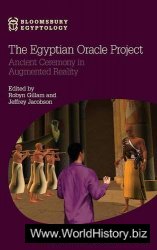 Author: Robyn Gillam (Editor), Jeffrey Jacobson (Editor) The Egyptian Oracle Project: Ancient Ceremony in Augmented Reality (Bloomsbury Egyptology) Bloomsbury Academic 2015 Format: PDF Size: 7.7 Mb Language: English For more than 2,000 years, between 1500 BCE and 600 CE, the Egyptian processional oracle was one of the main points of contact between temple-based religion and the general population. In a public ceremony, a god would indicate its will or answer questions through the movements of a portable cult statue borne by priests or important members of the community. The Egyptian Oracle Project is an interactive performance that adapts this ceremony to serve as the basis for a mixed-reality educational experience for children and young adults, using both virtual reality and live performance. The scene is set in a virtual Egyptian temple projected onto a wall. An oracle led by a high priest avatar (controlled by a live human puppeteer) is brought into the presence of a live audience, who act in the role of the Egyptian populace. Through the mediation of an actress, the audience interacts with the avatar, recreating the event. The series of carefully focused essays in this book provides vital background to this path-breaking project in three sections. After a brief introduction to educational theatre and virtual reality, the first section describes the ancient ceremony and its development, along with cross-cultural connections. Then the development of the script and its performance in the context of mixed-reality and educational theatre are examined. The final set of essays describes the virtual temple setting in more detail and explores the wider implications of this project for virtual heritage.
 
 A Short History of Byzantium A Short History of Byzantium 
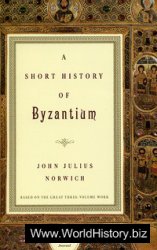 Author: John Julius Norwich A Short History of Byzantium Vintage ISBN: 0679772693 1998 Format: PDF Size: 17,5 МБ Language: English Pages: 496 n this magisterial adaptation of his epic three-volume history of Byzantium, John Julius Norwich chronicles the world's longest-lived Christian empire. Beginning with Constantine the Great, who in a.d. 330 made Christianity the religion of his realm and then transferred its capital to the city that would bear his name, Norwich follows the course of eleven centuries of Byzantine statecraft and warfare, politics and theology, manners and art.
 
 Zondervan Atlas of the Bible Zondervan Atlas of the Bible 
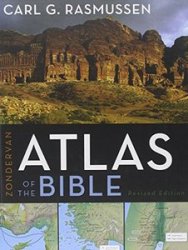 Zondervan Atlas of the Bible Author: Carl G. Rasmussen Zondervan 2010 ISBN: 0310270502 Pages: 304 Language: English Format: EPUB Size: 28 MB Zondervan Atlas of the Bible … a thoroughly revised edition of the most comprehensive Bible atlas ever designed for • Students • Bible Study Groups • Adult Learners • Travelers/Pilgrims to the Lands of the Bible • Pastors • Teachers • All Lovers of the Bible This major revision of the Gold Medallion Award-winning Zondervan NIV Atlas of the Bible is a visual feast that will help you experience the geography and history of Scripture with unprecedented clarity. The first section of the Atlas introduces the "playing board" of biblical history—using three–dimensional maps and photographic images to help the lands of the Bible come alive. The next section, arranged historically, begins with Eden and traces the historical progression of the Old and New Testaments. It provides an engaging, accurate, and faithful companion to God’s Word—illuminating the text with over one hundred full-color, multidimensional maps created with the help of Digital Elevation Modeling data. It concludes with chapters on the history of Jerusalem, the disciplines of historical geography, and the most complete and accurate listing and discussion of place-names found in any atlas. Throughout the Atlas, innovative graphics, chronological charts, and over one hundred specially selected images help illuminate the geographical and historical context of biblical events. The Zondervan Atlas of the Bible is destined to become a favorite guide to biblical geography for students of the Bible. This accessible and complete resource will assist you as you enter into the world of the Bible as never before.
|
|
























 World History
World History









